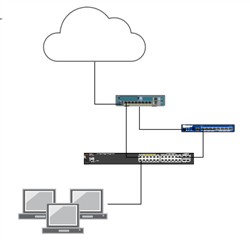I'm sure this has been answered but with no search option that I can find and having gone through over 40 pages of posts I've decided to ask the question.
We have moved from a Cisco ASA to Sophos XG. We are running the XG230 on firmware 17.5.9 MR-9. We are simply trying to duplicate the settings we have on the ASA that works to the Sophos. Cisco calls this a static or 1:1 NAT and the purpose is for a backup VPN connection for a vendor that supplied a Juniper for this VPN connection.
The goal is to have a public IP address that the vendor uses create a VPN tunnel to the Juniper. We restrict access to two IP address that they provide and allow all ports and protocols.
On the ASA we have port 0/3 configured with a VLAN using IP address 192.168.253.1. Then we have a static NAT pointing the public IP address to the IP of the Juniper (192.169.253.10) that is plugged into Port 0/3. Then we have ACL rules allowing their IP to that static NAT address.
On the XG what we've done is configure Port 3 as a DMZ interface with the IP address 192.168.253.1. Then under firewall rules we have a DNAT configured with the Source being WAN and the destination being the public IP address with a Forward to the DMZ zone we created 192.168.253.10 address of the Juniper for the server (nothing in mapped ports). We also have masquerading checked with the public IP address set as the outbound address.
We also have created a SNAT to essentially go the other direction. Source is the DMZ zone we created and the Device is the 192.168..253.10 address of the Juniper. Destination is the WAN with masquerading checked here with the outbound IP set to the Public IP address and the primary gateway is set to Outside.
On both these rules we have hosts set up for the IP addresses that we want to allow. For testing purposes I've added a third IP address. The problem is the vendor is claiming they are not seeing the tunnel come up. I can get to the Juniper using SSH and HTTPS but I have not access to log in. I worked with Sophos support the other day and he created a third rule which I have since disable as it broke the vendors ability to SSH, they could still reach the Juniper by HTTPS.
It's interesting to me that with these settings I can connect to the device via SSH and HTTPS but it's not building their VPN tunnel. I want to make sure that I have things configured properly before I try to get the vendor and Sophos on the phone at the same time.
This thread was automatically locked due to age.



